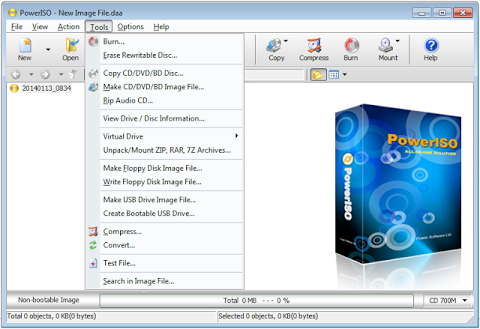Ms Office For Mac 2016 System Requirements

MS Office Integration Before making a decision on where to run MS CRM, you should consider that CRM features such as export data to MS Excel or the Mail Merge functionality are only available on Windows OS with Microsoft Office 365, Microsoft Office 2016, 2013, or 2010. What about Office 2016 for Mac? If you have a one-time purchase of Office 2016 for Mac or you have Office 365 for Mac and are using the Office 2016 for Mac build on macOS 10.11 or 10.10, your Office system requirements will not change. To use Office 2016 with Mac OS X, you must be running Mac OS X 10.10 (Yosemite) or later. For Office 2011, you must have: OS X version 10.5.8 or later. 1 GB or more of RAM. 2.5 GB of available hard disk space. An Intel processor.  Microsoft Office 2016 for Mac 16.16 VL Office 2016 for Mac is designed from the ground up to take advantage of the latest Mac features, including Retina display, full screen view support, and even scroll bounce. MS Office 2016 includes new features in the Mac a refreshed UI that utilizes strips, full help for Retina Display, and new sharing highlights for Office archives. In Word, there is another Design tab, Insights include, which is controlled by Bing, and ongoing co-creating.
Microsoft Office 2016 for Mac 16.16 VL Office 2016 for Mac is designed from the ground up to take advantage of the latest Mac features, including Retina display, full screen view support, and even scroll bounce. MS Office 2016 includes new features in the Mac a refreshed UI that utilizes strips, full help for Retina Display, and new sharing highlights for Office archives. In Word, there is another Design tab, Insights include, which is controlled by Bing, and ongoing co-creating.
My name is Alex Dubec and I’m a Program Manager on the Office Trustworthy Computing Performance team. My team is responsible for compiling system requirements across Office, and I’d like to give you a behind-the-scenes look at how we determine system requirements and the hardware your computer requires to run Office 2010. Before diving into all the details, I want to answer a question that I’m sure is on all of your minds: Can I use Office 2010 on the same hardware I’m using to run Office 2007? Pdf print driver sourceforge. In most cases, yes! CPU and RAM requirements for Office 2010 are the same as for Office 2007, so if your computer meets the Office 2007 system requirements, you can run Office 2010.
A graphics chipset will help boost the performance of certain features and disk footprint has increased (more on these points later), but as general rules: • If your current computer can run Office 2007, it can run Office 2010. • If you’re purchasing a new laptop or netbook, it can run Office 2010. • If you have a computer with a multi-core processor, it can run Office 2010 even faster. • If your computer is currently running Office 2003, it’s possible that it can run Office 2010 (check the requirements to be sure). What do the hardware requirements mean? First off, I’d like to explain what level of performance you can expect from minimum-requirement hardware.
The minimum hardware spec is about defining the kind of computer that an average Office customer needs to have in order to have an acceptable experience performing typical tasks. This means tasks like opening up and editing a 20-page report.
Tasks like creating some simple pie charts or scatterplots that highlight your findings, and putting together a few slides summarizing your results for that meeting next Tuesday. Or even tasks like writing up your blog post about system requirements. You should also be able to comfortably run two applications simultaneously. As you might expect, more intensive tasks benefit from fast chips, more RAM, or speedy hard drives, and newer hardware makes everyday tasks faster – but the hardware requirements aren’t about making Office 2010 blazing fast, or about running several applications at once, or about crunching financial models in a giant spreadsheet. They’re simply about getting typical tasks done. A lot of other pieces of software carry both “minimum” and “recommended” hardware requirements, and you might be wondering why Office 2010 doesn’t have “recommended” requirements.
The reason for this is that customers have told us that understanding hardware requirements can be confusing, and the difference in meaning between “minimum” and “recommended” requirements isn’t all that clear. For example, if the minimum RAM requirement for a program is listed as 1 GB, but 2 GB is recommended, what does that really mean? Microsoft office university of maryland.
Microsoft Office For Mac India
Does the customer need 1 GB or 2 GB? By including minimums, we’ve tried to make the hardware requirements as clear as possible. How do we approach Office 2010’s hardware requirements? CPU and RAM requirements approximately doubled between Office 2003 and Office 2007, as you can see below: One of the pieces of feedback we’ve received from customers is that they really, really hate having to buy new hardware every time a new version of Office is released.
With that in mind, one of our goals for the Office 2010 was to make sure that the minimum hardware requirement would not increase from Office 2007. We invested in improving the customer experience on minimum-requirement hardware, and we regularly tested performance throughout the development cycle. Our footprint has gotten larger since Office 2007, but we’re proud to say that we’ve succeeded in keeping the CPU and RAM requirements the same as for Office 2007. How do you verify the CPU and RAM requirements?